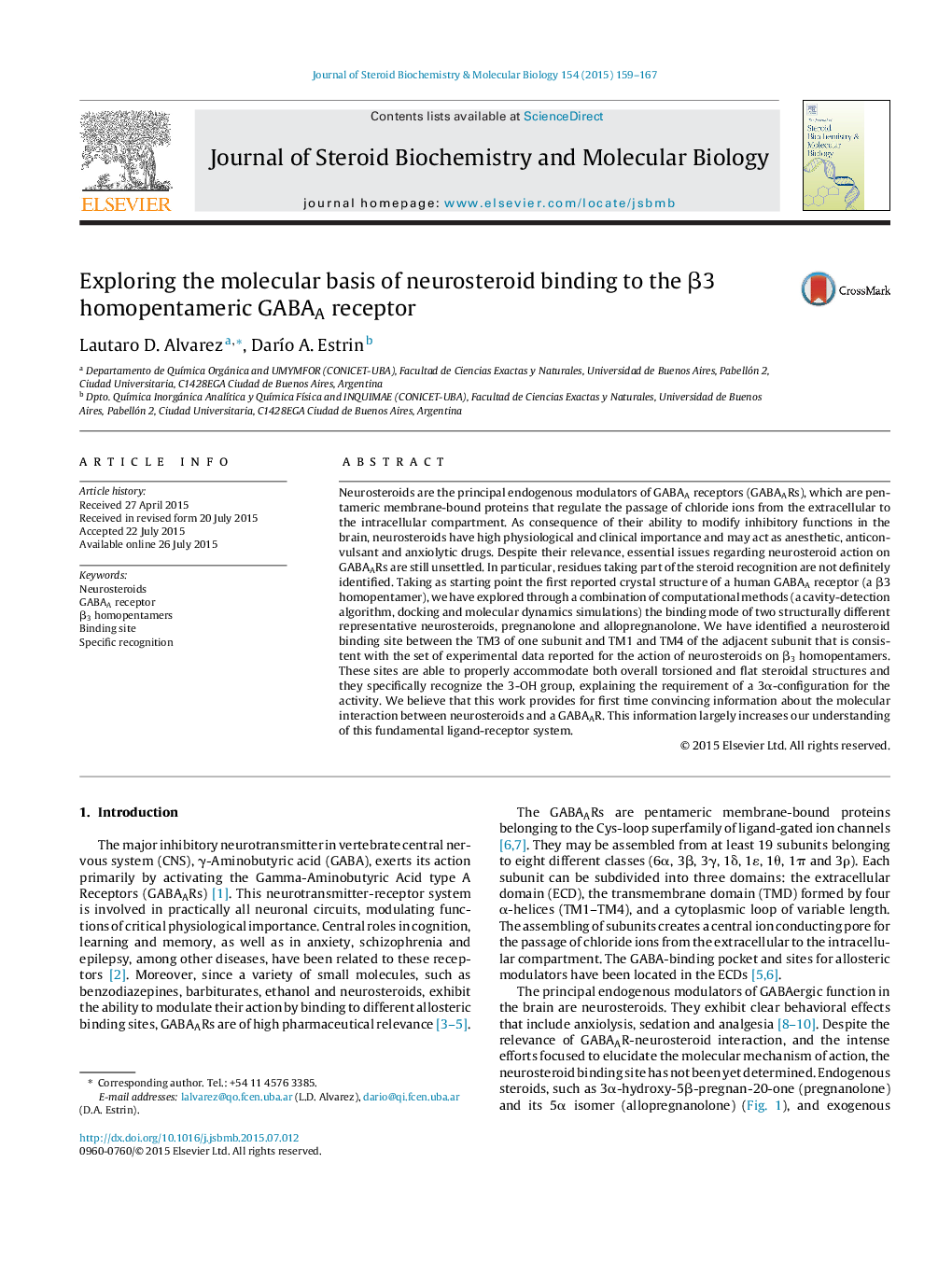| Article ID | Journal | Published Year | Pages | File Type |
|---|---|---|---|---|
| 1991311 | The Journal of Steroid Biochemistry and Molecular Biology | 2015 | 9 Pages |
•A neurosteroid binding site was identified in the β3 Homopentameric GABAA receptor.•The site is able to bind both overall torsioned and flat steroids.•Its structure can explain the requirement of a α configuration for the 3-OH group.
Neurosteroids are the principal endogenous modulators of GABAA receptors (GABAARs), which are pentameric membrane-bound proteins that regulate the passage of chloride ions from the extracellular to the intracellular compartment. As consequence of their ability to modify inhibitory functions in the brain, neurosteroids have high physiological and clinical importance and may act as anesthetic, anticonvulsant and anxiolytic drugs. Despite their relevance, essential issues regarding neurosteroid action on GABAARs are still unsettled. In particular, residues taking part of the steroid recognition are not definitely identified. Taking as starting point the first reported crystal structure of a human GABAA receptor (a β3 homopentamer), we have explored through a combination of computational methods (a cavity-detection algorithm, docking and molecular dynamics simulations) the binding mode of two structurally different representative neurosteroids, pregnanolone and allopregnanolone. We have identified a neurosteroid binding site between the TM3 of one subunit and TM1 and TM4 of the adjacent subunit that is consistent with the set of experimental data reported for the action of neurosteroids on β3 homopentamers. These sites are able to properly accommodate both overall torsioned and flat steroidal structures and they specifically recognize the 3-OH group, explaining the requirement of a 3α-configuration for the activity. We believe that this work provides for first time convincing information about the molecular interaction between neurosteroids and a GABAAR. This information largely increases our understanding of this fundamental ligand-receptor system.
Graphical abstractFigure optionsDownload full-size imageDownload as PowerPoint slide
